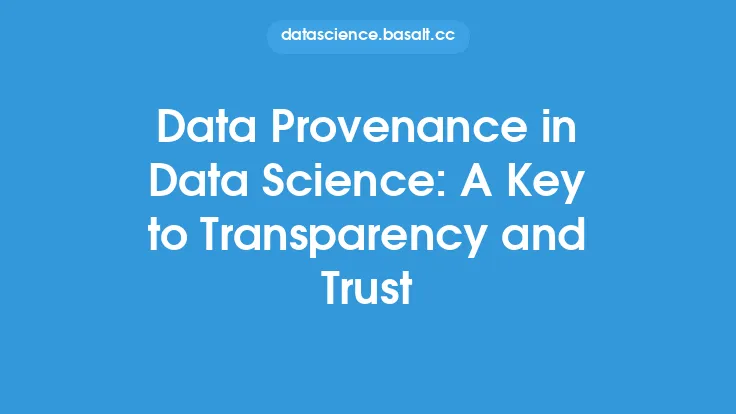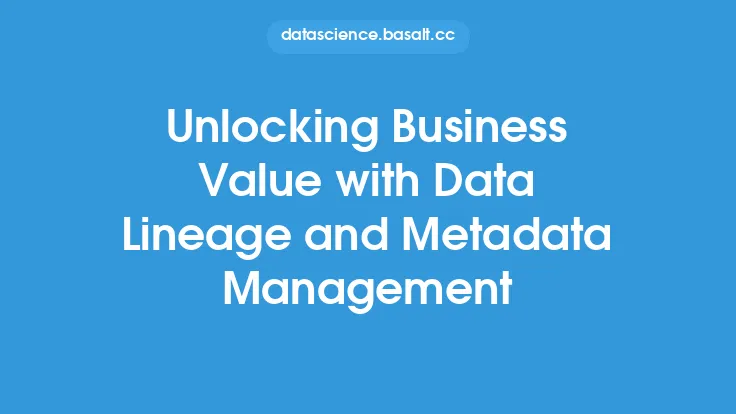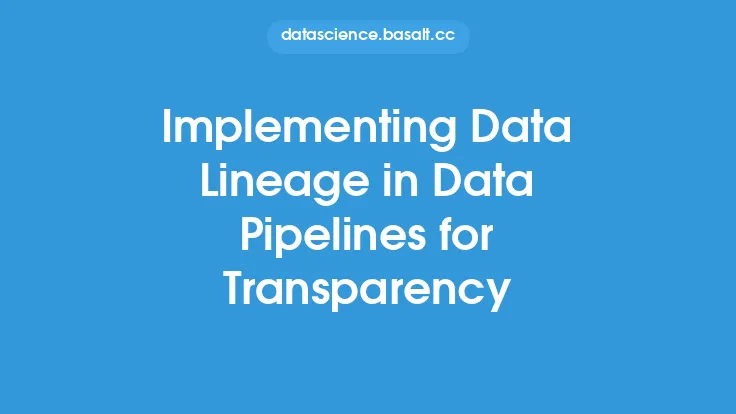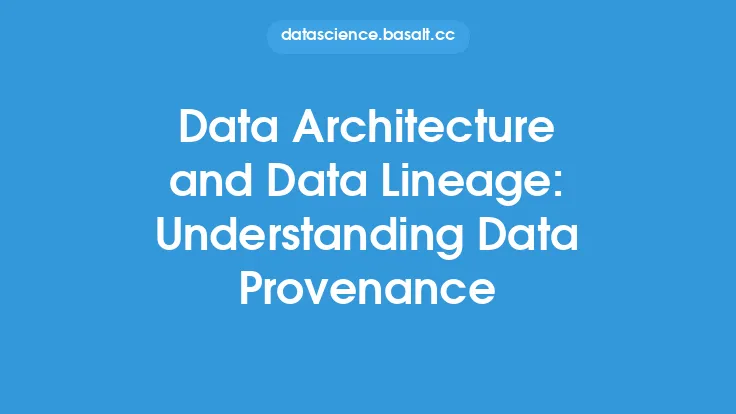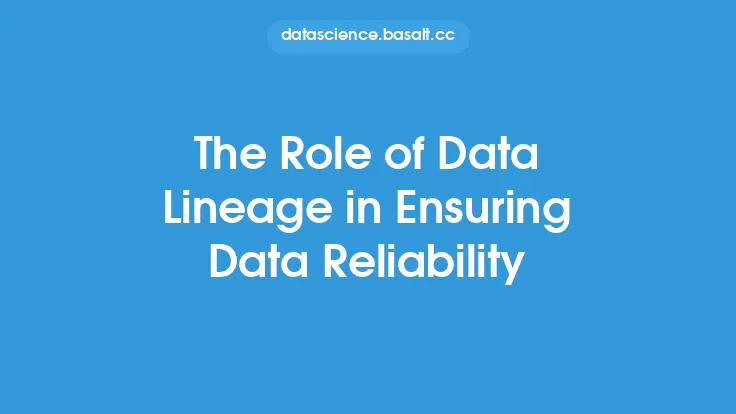Data lineage is a critical component of data quality, as it provides a clear understanding of the origin, processing, and movement of data throughout its lifecycle. By creating a detailed map of data flows, organizations can improve data transparency and trust, which are essential for making informed business decisions. In this article, we will delve into the concept of data lineage and its role in enhancing data transparency and trust.
What is Data Lineage?
Data lineage refers to the process of tracking and documenting the movement and transformation of data as it flows through an organization's systems, applications, and processes. It involves creating a detailed record of the data's origin, processing, storage, and usage, including any changes, updates, or deletions made to the data. Data lineage provides a complete and accurate picture of the data's history, allowing organizations to understand how the data was created, modified, and used.
Benefits of Data Lineage
Data lineage offers several benefits that contribute to improved data transparency and trust. Some of the key benefits include:
- Improved data quality: By tracking the movement and transformation of data, organizations can identify errors, inconsistencies, and inaccuracies, and take corrective action to improve data quality.
- Enhanced data governance: Data lineage provides a clear understanding of data ownership, stewardship, and accountability, which are essential for effective data governance.
- Increased transparency: Data lineage provides a detailed record of data flows, allowing organizations to understand how data is being used and shared, and to identify potential security risks.
- Better decision-making: By providing a complete and accurate picture of the data's history, data lineage enables organizations to make informed business decisions, based on reliable and trustworthy data.
How Data Lineage Improves Data Transparency
Data lineage improves data transparency by providing a clear and detailed understanding of the data's origin, processing, and movement. This transparency is essential for building trust in the data, as it allows organizations to understand how the data was created, modified, and used. Some of the ways data lineage improves data transparency include:
- Data provenance: Data lineage provides a clear understanding of the data's origin, including the source systems, applications, and processes that created the data.
- Data processing: Data lineage tracks the processing and transformation of data, including any changes, updates, or deletions made to the data.
- Data movement: Data lineage documents the movement of data between systems, applications, and processes, including any data sharing or exchange with external parties.
Technical Aspects of Data Lineage
From a technical perspective, data lineage involves the use of specialized tools and technologies to track and document data flows. Some of the key technical aspects of data lineage include:
- Metadata management: Data lineage relies on the collection, storage, and management of metadata, which provides a detailed description of the data's structure, content, and context.
- Data mapping: Data lineage involves the creation of detailed data maps, which illustrate the flow of data between systems, applications, and processes.
- Data tracking: Data lineage requires the use of data tracking technologies, such as data logging and auditing, to monitor and record data movements and transformations.
Implementing Data Lineage
Implementing data lineage requires a structured approach, which involves several key steps, including:
- Data discovery: Identifying and cataloging the organization's data assets, including the source systems, applications, and processes that create and use the data.
- Data mapping: Creating detailed data maps to illustrate the flow of data between systems, applications, and processes.
- Metadata management: Collecting, storing, and managing metadata to provide a detailed description of the data's structure, content, and context.
- Data tracking: Implementing data tracking technologies to monitor and record data movements and transformations.
Challenges and Limitations
While data lineage offers several benefits, there are also challenges and limitations to its implementation. Some of the key challenges and limitations include:
- Data complexity: Data lineage can be complex and difficult to implement, particularly in organizations with large and diverse data assets.
- Data volume: The volume of data being generated and processed can make it difficult to track and document data flows.
- Data variety: The variety of data formats, structures, and sources can make it challenging to create a unified view of data lineage.
Best Practices
To overcome the challenges and limitations of data lineage, organizations should follow best practices, including:
- Start small: Begin with a small pilot project to test and refine the data lineage approach.
- Focus on critical data: Prioritize the most critical and sensitive data assets, and focus on creating a detailed understanding of their lineage.
- Use automated tools: Leverage automated tools and technologies to streamline the data lineage process and reduce manual effort.
- Establish governance: Establish clear governance policies and procedures to ensure that data lineage is maintained and updated regularly.
Conclusion
Data lineage is a critical component of data quality, as it provides a clear understanding of the origin, processing, and movement of data throughout its lifecycle. By creating a detailed map of data flows, organizations can improve data transparency and trust, which are essential for making informed business decisions. While there are challenges and limitations to implementing data lineage, following best practices and using specialized tools and technologies can help organizations overcome these hurdles and achieve the benefits of data lineage.
